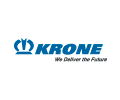In the trucking industry, the fleet size is a key metric of success. The number of trucks in your fleet can directly impact your bottom line and play a role in determining whether or not you are able to secure new contracts and grow your business.

If you are looking to grow your trucking fleet, there are a few key steps you can take to make this process as efficient and effective as possible.
1. Develop a Detailed Business Plan
The first step in growing your trucking fleet is to develop a detailed business plan. This document should outline your company’s goals, objectives, and strategies for expanding your fleet. It should also include a financial projection for the expansion, detailing the expected costs and revenues associated with adding new trucks.
Your business plan will serve as a roadmap for your expansion and will help you to secure funding from investors or lenders. Without a well-defined plan, it will be difficult to make your fleet expansion a success.
2. Identify Funding Sources
The second step is to identify appropriate funding sources for your expansion. If you are seeking outside investment, you will need to put together a pitch deck or business plan to present to potential investors. Alternatively, you may choose to finance your fleet growth through loans or lines of credit.
No matter what route you choose, it is important to have a solid plan in place for how you will finance your expansion. Without adequate funding, it will be difficult to purchase new trucks and grow your fleet.
3. Select the Right Trucks
Once you have secured funding for your expansion, it is time to start selecting the right trucks for your new fleet. There are many different types of trucks available, each with unique performance characteristics and price points.
When deciding which trucks to add to your fleet, you will need to consider factors such as fuel efficiency, load capacity, driving range, and maintenance requirements. On the maintenance side consider using John Delany Motors for all your needs. It is also important to select trucks that are reliable and well-suited for the types of loads you typically transport.
4. Train Your Drivers
In order for your fleet expansion to be successful, it is crucial that your drivers are well-trained and equipped to handle the new trucks in your fleet. This may involve providing additional training on topics such as vehicle safety, load security, and route planning.
Your drivers should also be familiar with the features and controls of their new trucks so that they can make efficient use of any advanced technologies or driver assistance systems. By investing in your drivers and keeping them well-trained, you can help ensure the safety and success of your fleet expansion.
5. Market Your Services Effectively
One final step in growing your trucking fleet is to market your services effectively. This includes creating a strong branding strategy and promoting your business through advertising, public relations, and online marketing.
You will need to make sure that potential customers are aware of your expanded fleet and the services you offer. If you can successfully market your business and attract new clients, you will be well-positioned to grow your fleet and achieve success in the trucking industry.
In Closing
Growing your trucking fleet can be a complex and challenging process, but it is achievable with careful planning and attention to detail. By following the steps outlined in this article, you can increase your chances of success and take your business to the next level!


.gif?rand=6891)








